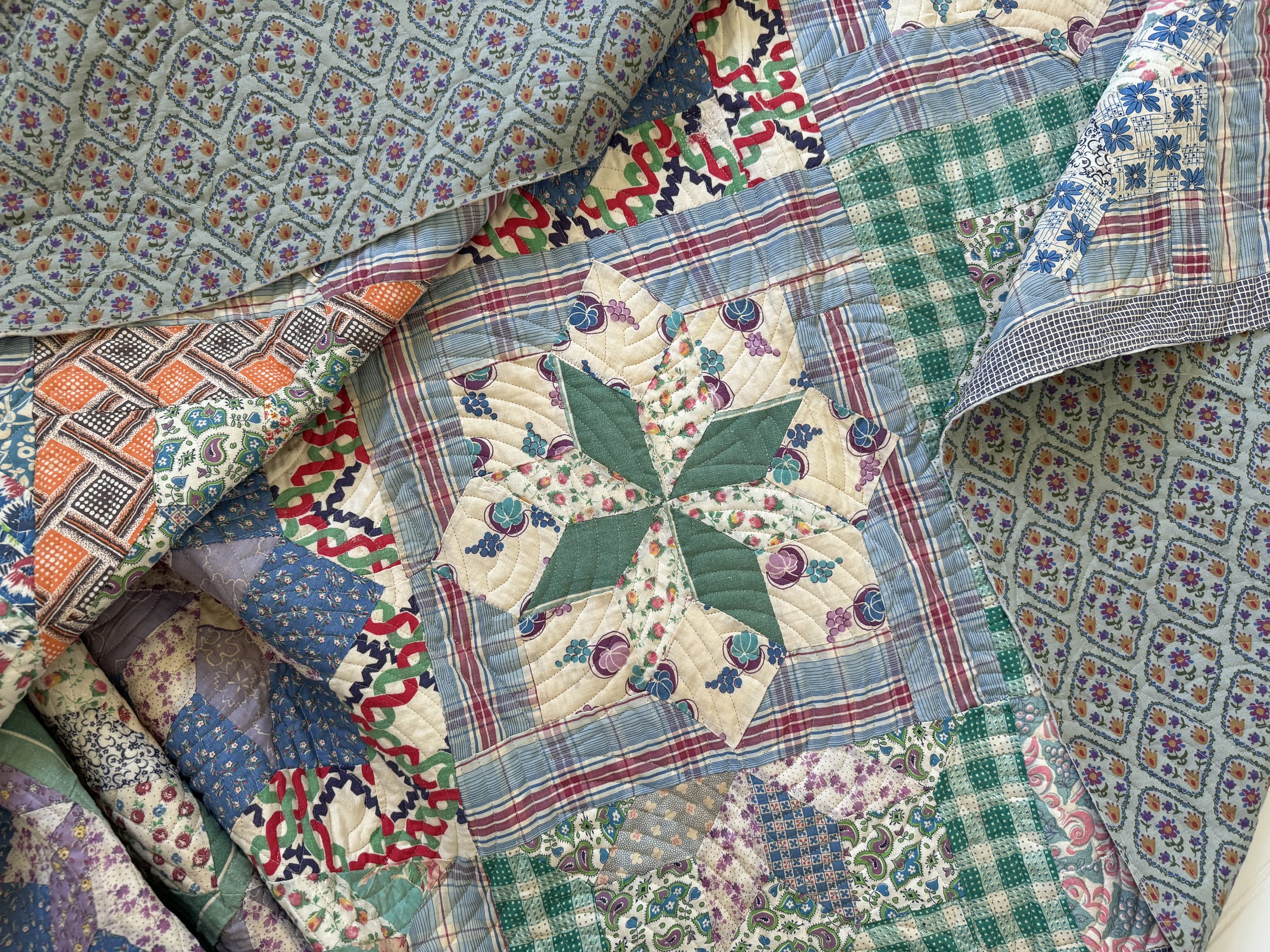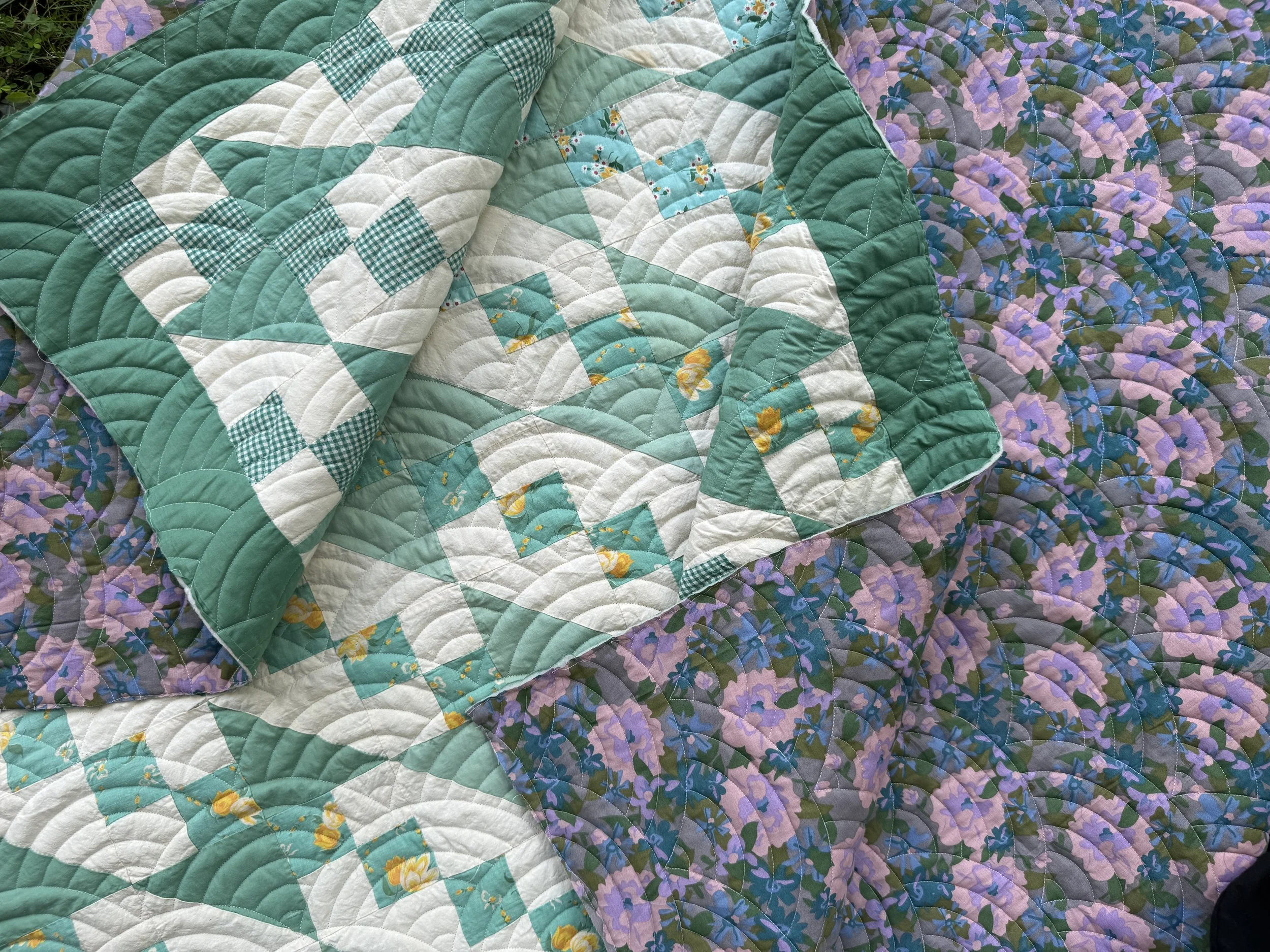Vintage Quilt Tops
Breathe New Life into Vintage Quilt Tops
At Trace Creek Quilting, we know unfinished quilt tops pieced by someone from our past are just as special as the ones they were able to finish. Whether handed down purposefully or discovered tucked away in a cedar chest, these tops hold family history and the potential to become treasured heirlooms for future generations.
If you would like to know if TCQ can take on your vintage or unfinished quilt at whatever stage it is in, send us a quick photo. We are happy to take a look and give you honest feedback. Below are some guidelines that might help get you started.
(Quick note: we realize that many of you who are having these quilts completed are not quilters yourselves and that’s okay! Do not be intimidated! I’m here to walk you step by step through the process so you understand exactly what you are getting yourself into. Call, email, text…. about the only form of communication I don’t take is carrier pigeon. Or fax. I don’t have a fax machine anymore. HA!)
Things that make a quilt a good candidate for longarming:
Seams are strong and intact.
Fabrics are overall in good shape, not too thin or frayed.
The quilt top is ready, or near ready for the quilting process.
On a case-by-case basis we can take on some sewing tasks to help bring your quilt to completion. This includes adding borders, trimming frayed edges, and piecing blocks together.
Things that might make a quilt unsuitable for longarming:
Heavily damaged, dry rotted, super thin or fraying fabrics.
Seams that are unstable or extra loose.
Quilts that are extremely dirty or have heavy odors.
Quilts with lots of raw edge applique or thick embellishments that may catch on our machines.
We are unable to do repair work on quilts at this time and we do need to protect our spaces, machines, and other customers’ quilts from heavy odors and dirt.
PS: There isn’t anything wrong with this quilt - we just like the excuse to show lovely vintage tops we’ve quilted. :)
Here are some of the best types of vintage quilt tops to send our way:
Hand-Pieced Tops with Solid Construction: These tops, even if stitched years ago, often hold up beautifully to quilting—especially if the seams are still strong. Longarm quilting can give it the extra stability it needs to be handled and used for generations to come.
Machine-Pieced Vintage Beauties: Not all vintage tops were hand pieced! Those made on a machine have often held up very well over time. If the fabrics are still in good shape, these tops are often ready for quilting with very little prep.
Scrappy Samplers or Utility Quilts: Quilt tops made from scraps, feed sacks, or repurposed clothing often carry tons of character - sometimes carrying memories of dresses, shirts, curtains and past quilts with each individual scrap of fabric. The variety in these may pose some challenges, but can often be the most rewarding ones to have completed.
Inherited Family Heirlooms: If you’ve recently inherited a quilt top and aren’t sure what to do with it, longarming can help turn it into a usable piece of family history. We’ll help you choose a batting and quilting pattern that compliments the quilt and the generation in which it was made.
Cross-Stitched Quilt tops and blocks: There was a time period where it was very popular to buy blocks with pre-printed patterns on which you cross stitched or embroidered a pattern and then pieced all the blocks together. These often even had quilting lines printed on them in water dissolvable ink. Even with the embroidery and stitches on the blocks, these longarm beautifully.
“Almost Done Quilt Tops”: Maybe the borders aren’t on yet. Maybe one corner is a little off. No worries. We can take on those last tasks that the maker wasn’t able to complete and then return it to you as a usable quilt.
Hopefully you are getting excite about sending your quilt our way! I do have a couple of additional points I think are important before moving forward.
Up until fairly recently the most common ways to finish a quilt was hand quilting, basic machine quilting, and tying quilts. All of these methods have more forgiveness in them than longarming and therefore vintage quilts often have some qualities (fullness in the fabric, thick seams…) that can be more challenging on a longarm. We do our best to identify trouble areas before we start and ease through them, but it’s good to set expectations appropriately and keep in mind that an imperfect finished quilt is better than a perfect unfinished quilt.
TCQ only does Edge-to-Edge quilting. Many vintage quilts would be beautiful with custom heirloom quilting. If you feel strongly that the cost and wait for such services elsewhere are worth it on your quilt treasure, we encourage you to pursue that with someone who does custom work.
Whew! Still with me? I hope you feel the top you have is worth finishing and that we can help!
-Lilo and the TCQ Team









